Did you know that there are not just one or two types of peas, but a wide range of varieties that can be grown in your garden? From the classic English peas to the crunchy snow peas and sweet sugar snap peas, each type offers a unique flavor and culinary experience. And it doesn’t stop there! There are also different species of peas, each with its own distinct characteristics.
Peas (Pisum sativum) are cool-season crops that thrive in garden environments. While most people are familiar with English peas, there is so much more to discover about the various types of peas and their diverse cultivars. Whether you’re a seasoned gardener or just starting out, exploring these different varieties can introduce a whole new world of flavors and possibilities to your homegrown meals.
Key Takeaways:
- Peas can be categorized into three main types: English peas, snow peas, and sugar snap peas.
- There are different varieties within each type, with variations in maturity, height, heat tolerance, and disease resistance.
- Growing peas requires well-drained soil, proper spacing, and regular watering.
- Peas are relatively pest-free but may be susceptible to certain insects and diseases.
- Harvesting peas at the right time is essential for optimal flavor and texture.
Types of Peas
When it comes to peas, there are a few main types that you can grow in your garden: English peas, snow peas, and sugar snap peas. Let’s take a closer look at each of these pea varieties:
English Peas
English peas, also known as garden peas or shelling peas, are the classic type of pea that many people are familiar with. The pods of English peas are not edible, and the peas themselves need to be removed from the pod before consuming. These peas are usually round and plump, with a sweet flavor and a starchy texture when cooked.
Snow Peas
Snow peas have edible pods and are often used in stir-fries and salads. The pods are flat and tender, and the immature seeds inside are small and undeveloped. Snow peas have a crisp texture and a mild, slightly sweet flavor.
Sugar Snap Peas
Sugar snap peas are another type of pea with edible pods. These peas have plump pods that are sweet and crunchy, perfect for snacking or adding to salads and stir-fries. The peas inside the pod are larger and more developed compared to snow peas.
- English peas: removed from pod before consuming
- Snow peas: edible pods, small and undeveloped seeds
- Sugar snap peas: edible pods, larger and more developed peas inside
Within each type of pea, there are different varieties available, each with its own unique characteristics. Variations in maturity, height, heat tolerance, and disease resistance make it important to choose the right type and variety based on your personal preferences and growing conditions.
Growing Peas
When it comes to growing peas, there are a few key factors to consider for a successful harvest. By following these pea cultivation tips, you can ensure that your pea plants thrive and produce an abundance of delicious peas.
Soil Requirements
Peas prefer well-drained soil with a pH between 5.8 and 7.0. Before planting, it’s essential to prepare the soil by removing any weeds and incorporating organic matter, such as compost or well-aged manure. This helps improve soil fertility and drainage, providing an optimal environment for pea growth.
Planting
Peas can be directly sown in the garden either in the spring or fall, depending on your location and the specific pea cultivar. Sow the seeds at a depth of 1 to 2 inches, spacing them 1.5 to 3 inches apart. This spacing allows enough room for the plants to grow and develop without overcrowding.
Watering
Proper watering is crucial for healthy pea plants. Peas require consistent moisture, especially during flowering and pod development. If rainfall is insufficient, provide approximately 1 inch of water per week. Be careful not to overwater, as excessive moisture can lead to root rot and other issues.
Sunlight and Support
Peas thrive in full sun, so it’s essential to choose a location in your garden that receives at least 6 to 8 hours of direct sunlight per day. Some varieties of peas, especially snow peas and sugar snap peas, may require support as they grow. Stakes, trellises, or pea netting can provide the necessary support for the plants to climb and reach their full potential.
Harvesting
Peas can typically be harvested in approximately 50 to 70 days, depending on the variety. Garden peas are ready to be picked when the pods are plump and full, but before the seeds inside mature. Snow peas are best harvested when the pods are full-sized but still flat, while snap peas should be picked when the pods are rounded and filled out. To enjoy a continuous harvest, consider sowing new seeds every two to four weeks.
By following these pea cultivation tips, you’ll be able to grow peas successfully and enjoy a bountiful harvest of delicious, homegrown peas.
Pea Pest Control
While peas are generally resistant to pests, there are a few insects and diseases that can impact their growth and yield. It’s important to be aware of these common issues and take appropriate measures for effective pest control.
Insects Affecting Peas
Peas can be vulnerable to various insect pests, including:
- Cutworms: These caterpillars can cut through seedlings at the base, causing severe damage.
- Armyworms: Similar to cutworms, armyworms can rapidly devour young pea plants.
- Leafhoppers: These small, winged insects feed on plant sap, causing stunted growth and yellowing leaves.
- Aphids: These tiny insects can cluster on the plants, causing leaf curling, stunted growth, and sap removal.
- Mites: These microscopic pests feed on plant tissue, causing discoloration and distortion of leaves.
- Pea weevils: Adult weevils feed on the plant foliage, while larvae feed on the seeds, resulting in reduced yield.
To control these pests, there are several methods you can employ:
- Place collars around the seedlings to deter cutworms and armyworms from reaching the plants.
- Manually remove insects from the plants, especially in the early stages of infestation.
- Use appropriate insecticides as a last resort, following manufacturer instructions carefully.
Diseases Affecting Peas
Peas are susceptible to certain diseases, including:
- Powdery mildew: A fungal infection that presents as a white, powdery coating on the leaves, causing reduced photosynthesis and plant vigor.
- Damping off: A fungal disease that affects young seedlings, causing wilting, stem rot, and eventual death.
To combat these diseases, consider the following measures:
Apply neem oil or appropriate fungicides to the foliage to control powdery mildew.
Plant peas in well-drained soil to prevent damping off and treat seeds with a fungicide prior to planting.
Successfully managing pests and diseases is key to a healthy pea crop. By implementing preventive strategies and timely intervention, you can ensure optimal growth and yield.
How to Harvest Peas
Now that your pea plants have flourished and produced beautiful pods, it’s time to harvest your peas to enjoy their fresh flavors. Proper timing is crucial to ensure that you get the most out of your harvest. Here are some tips on when and how to harvest peas:
- Garden Peas: Harvest garden peas when the pods are plump and full, but before the seeds inside mature. The pods should feel firm to the touch. Avoid waiting too long, as overripe peas can become starchy and lose their sweetness.
- Snow Peas: Harvest snow peas when the pods are full-sized but still flat. The peas inside should be barely developed. Look for bright green, tender pods without noticeable bulges.
- Snap Peas: Harvest snap peas when the pods are rounded and filled out. The peas inside should be well developed but still tender. You can give the pod a gentle squeeze to check if the peas feel full and plump.
It’s important to harvest your peas regularly to encourage continuous pod production. Regular picking also prevents overripe pods from remaining on the plants, which can signal to the plant that it no longer needs to produce more. Aim to harvest your peas every 1-2 days during peak season.
When you’re ready to harvest, hold the stem of the pea pod with one hand and use your other hand to gently pull the pod off the plant. Be careful not to damage the surrounding plant or disturb the neighboring pods.
“The most rewarding thing about growing peas is being able to pick them fresh from the garden. The taste of freshly harvested peas is simply unmatched, and it’s a joy to savor their sweet, crisp flavors,” says avid gardener Jennifer Miller.
“Harvesting peas at the right time is key to experiencing the best flavor and texture. I always make sure to pick them at their peak ripeness to enjoy the fullness of their natural sweetness,” Jennifer adds.
Once harvested, it’s best to consume your peas as soon as possible to enjoy their freshness. The taste and crunchiness are at their peak immediately after picking. If you can’t eat them right away, store them in the refrigerator for up to a few days. However, keep in mind that peas lose their sweetness and crispness over time, so it’s best to enjoy them as soon as you can.
Tips for Harvesting Peas:
- Harvest garden peas when pods are plump and full, but before the seeds mature.
- Harvest snow peas when pods are full-sized but still flat.
- Harvest snap peas when pods are rounded and filled out.
- Harvest peas regularly to encourage continuous pod production.
- Consume freshly harvested peas for the best taste and texture.
- Store harvested peas in the refrigerator for a short period.
| Type of Pea | Harvest Time | Pod Appearance | Pea Inside Pod |
|---|---|---|---|
| Garden Peas | When pods are plump and full, but before the seeds mature | Firm, full, and green | Underdeveloped and tender |
| Snow Peas | When pods are full-sized but still flat | Bright green and tender | Barely developed |
| Snap Peas | When pods are rounded and filled out | Round and plump | Well developed and tender |
Varieties of Peas
When it comes to growing peas in your garden, there is a wide range of varieties to choose from. These pea cultivars have been specifically bred to possess different characteristics such as size, taste, disease resistance, and heat tolerance. Selecting the right pea variety can make a significant difference in the success of your garden. Below are some of the recommended pea varieties:
Snow Peas
‘Oregon Giant’: This snow pea variety is known for its large, sweet pods and exceptional yield. It is popular among gardeners for its delicious flavor and crisp texture.
‘Oregon Sugar Pod II’: Another notable snow pea variety, the ‘Oregon Sugar Pod II’, offers tender and stringless pods that can be harvested at any stage of growth. It is an excellent choice for fresh eating or stir-frying.
Snap Peas
‘Sugar Heart’: This snap pea variety combines the sweetness of garden peas and the crispness of snow peas. Its plump and long pods are great for snacking or adding to salads.
Garden Peas
‘Little Marvel’: This garden pea cultivar is a compact variety that produces sweet and tender peas. It grows well even in smaller spaces and is ideal for home gardens.
‘Green Arrow’: An outstanding garden pea variety with long, well-filled pods and excellent flavor. ‘Green Arrow’ is prized for its high yields and disease resistance.
Whether you prefer the delicate sweetness of snow peas, the crunchy texture of snap peas, or the classic flavor of garden peas, there is a recommended variety to suit your preferences and growing conditions. Experimenting with different pea cultivars can add diversity and excitement to your garden, and provide you with an abundance of delicious homegrown peas.
| Snow Pea Varieties | Snap Pea Varieties | Garden Pea Varieties |
|---|---|---|
| ‘Oregon Giant’ | ‘Sugar Heart’ | ‘Little Marvel’ |
| ‘Oregon Sugar Pod II’ | ‘Green Arrow’ |
Site Preparation and Planting
When it comes to growing peas, proper site preparation and planting are key to a successful harvest. Here are some essential tips to get your pea patch off to a great start.
1. Select the Right Location
Peas thrive in full sun, so choose a spot in your garden that receives at least 6 hours of direct sunlight per day. Additionally, make sure the soil is well-drained, as peas do not tolerate soggy conditions.
2. Improve Your Soil
Before planting your peas, it’s important to prepare the soil. Start by incorporating organic matter, such as compost or well-rotted manure, to improve soil fertility and drainage. Adding a complete fertilizer rich in nitrogen, phosphorus, and potassium will provide essential nutrients for healthy pea growth.
3. Wait for the Right Time
Peas are a cool-season crop, so it’s important to wait until the soil temperature reaches around 40 degrees Fahrenheit before planting. Also, make sure the soil is dry enough to work, as planting in wet soil can lead to poor germination and root rot.
4. Pre-germinate or Use Inoculant
To give your peas a head start, you can pre-germinate the seeds. Simply place the seeds between damp paper towels or in a container of water for 24 hours before planting. This can help improve germination rates and speed up establishment. Another option is to use inoculant powder, which contains beneficial bacteria that enhance nitrogen fixation in the soil, promoting healthy pea growth.
5. Planting Depth and Spacing
When planting your peas, aim for a planting depth of around 1 inch. This will provide enough soil coverage for proper germination while still allowing the seedlings to emerge. Space the seeds about 1 to 2 inches apart to give the plants room to grow and develop.
6. Provide Support for Taller Varieties
Some pea varieties, especially those that grow tall, may require support to prevent them from falling over. Consider using trellises, stakes, or pea brushes to provide support and keep the plants upright.
By following these site preparation and planting tips, you’ll be well on your way to growing healthy and abundant pea plants in your garden.
I always make sure to prepare my soil properly before planting peas. Incorporating organic matter and adding a complete fertilizer has made a noticeable difference in the growth and productivity of my pea plants. Plus, using trellises for support has helped keep the taller varieties from toppling over. It’s all about creating the best conditions for these delicious legumes to thrive!
Care and Troubleshooting
When it comes to caring for your pea plants, proper maintenance is key to ensure their growth and productivity. Here are some important tips to keep in mind:
- Regular watering: Peas require consistent moisture, especially during flowering and pod development. Be sure to water them regularly, providing about 1 inch of water per week if rainfall is insufficient. This will help promote optimal growth and prevent the plants from wilting.
- Mulching: To conserve moisture and suppress weed growth, apply a layer of organic mulch around your pea plants. This will help retain soil moisture and prevent competing weeds from stealing nutrients and water from the peas.
- Training the vines: Pea plants are climbing vines that can benefit from support structures such as stakes, trellises, or pea brush. Training the vines onto these supports will help keep them upright and prevent them from sprawling on the ground.
- Providing shade: Peas prefer cooler temperatures and can struggle in hot weather. If you live in a region with high temperatures, consider providing some shade to protect the plants from excessive heat. This can be done by using shade cloth or planting them near taller plants that can offer some shade.
“Proper care and maintenance can help prevent and address common issues that pea plants may encounter.”
Despite their relatively easy care, pea plants can still experience some problems. Here are a few common issues and how to deal with them:
- Bird damage: Birds, especially sparrows, may be attracted to young pea seedlings and pull them up from the ground. To protect your plants, you can cover them with netting or use scare tactics like reflective materials or noise-making devices to deter the birds.
- Root rot: Peas prefer well-drained soil and are susceptible to root rot in overly wet or poorly drained conditions. To prevent this, ensure that your planting site has good drainage and avoid overwatering. If root rot is already present, removing affected plants and improving drainage can help mitigate the problem.
- Poor yields: Excessive nitrogen fertilizer can result in lush green foliage but poor pod production. Avoid over-fertilizing peas, especially with nitrogen-rich fertilizers, as this can lead to imbalanced growth. Instead, choose a balanced fertilizer or incorporate compost into the soil before planting.
- Aphid infestations: Aphids are small, sap-sucking insects that can weaken pea plants and transmit diseases. To control aphids, you can spray the plants with a mixture of water and mild soap or use organic insecticides. Additionally, attracting beneficial insects like ladybugs or lacewings can help keep aphid populations in check.
Note:
Taking preventative measures and addressing any issues promptly will help ensure a successful pea crop. Regular monitoring, proper care, and timely intervention can keep your pea plants healthy and productive throughout their growing season.
References:
- “Peas: Planting, Growing, and Harvesting Pea Plants.” Almanac. Accessed July 23, 2022.
- “Problems with Growing Peas and How to Prevent Them.” GrowVeg. Accessed July 23, 2022.
Conclusion
In conclusion, growing peas in your garden can be a rewarding experience. Whether you choose English peas, snow peas, or sugar snap peas, each variety offers its own unique characteristics and flavors that can add variety to your culinary adventures.
However, to ensure a successful pea crop, proper site preparation, planting, and care are essential. It is important to provide peas with well-drained soil, regular watering, and adequate spacing. Monitoring for pests and diseases is crucial to protect your plants and ensure optimal growth.
Additionally, timing is key when it comes to harvesting peas. Garden peas should be harvested when the pods are plump and full, while snow peas and sugar snap peas are best picked while the pods are still young and tender. By harvesting regularly, you can encourage continuous pod production and enjoy the freshest flavors of your homegrown peas.
So, why not dive into the world of pea cultivation and enhance your gardening and cooking experiences? With the right techniques and a little experimentation, you can enjoy a bountiful harvest of delicious peas right from your own backyard.

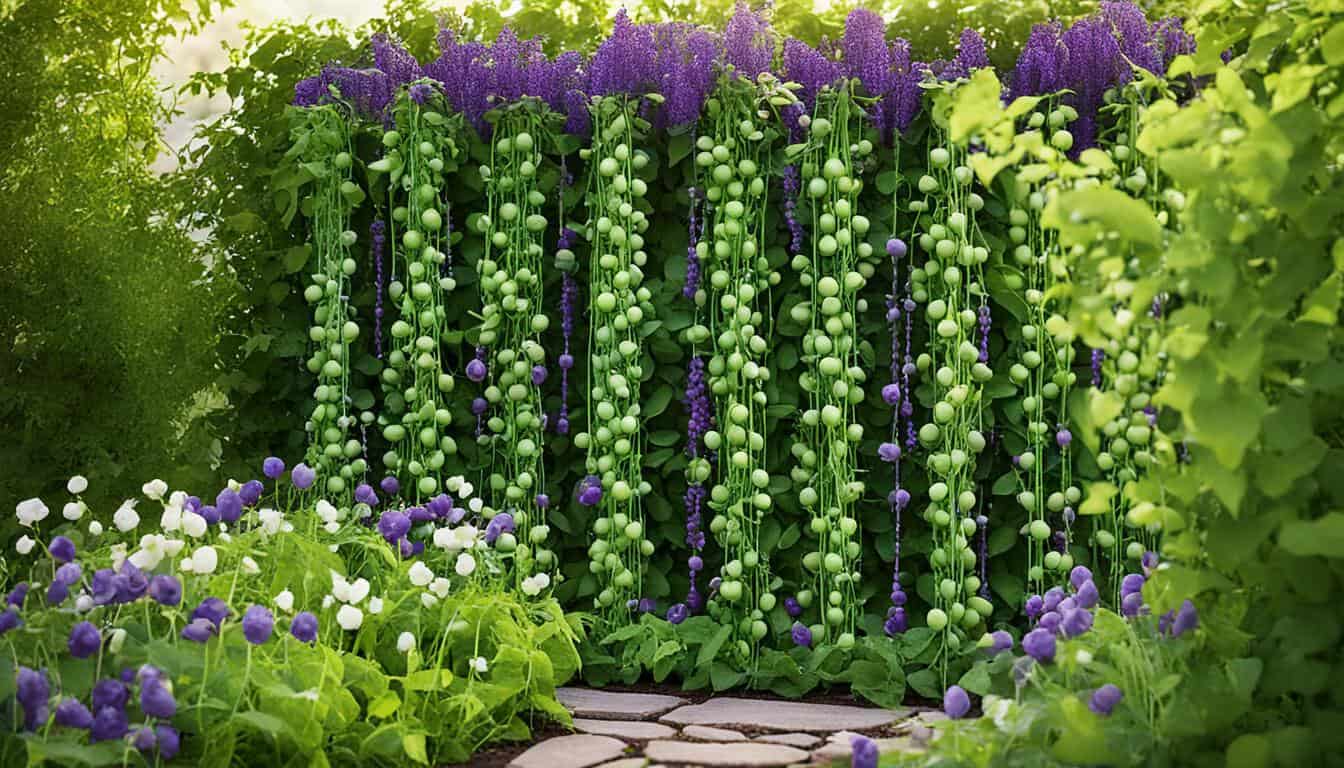
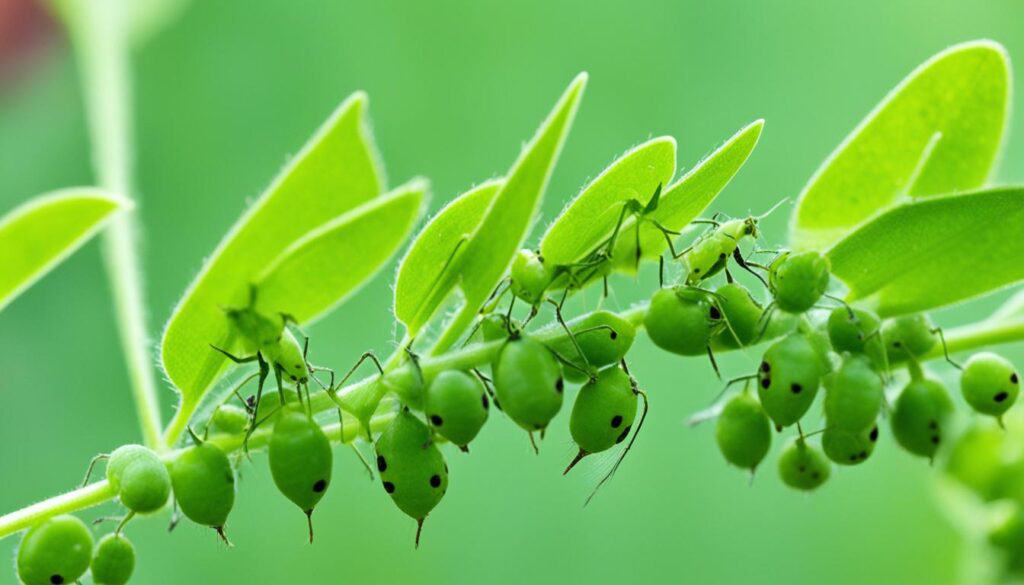

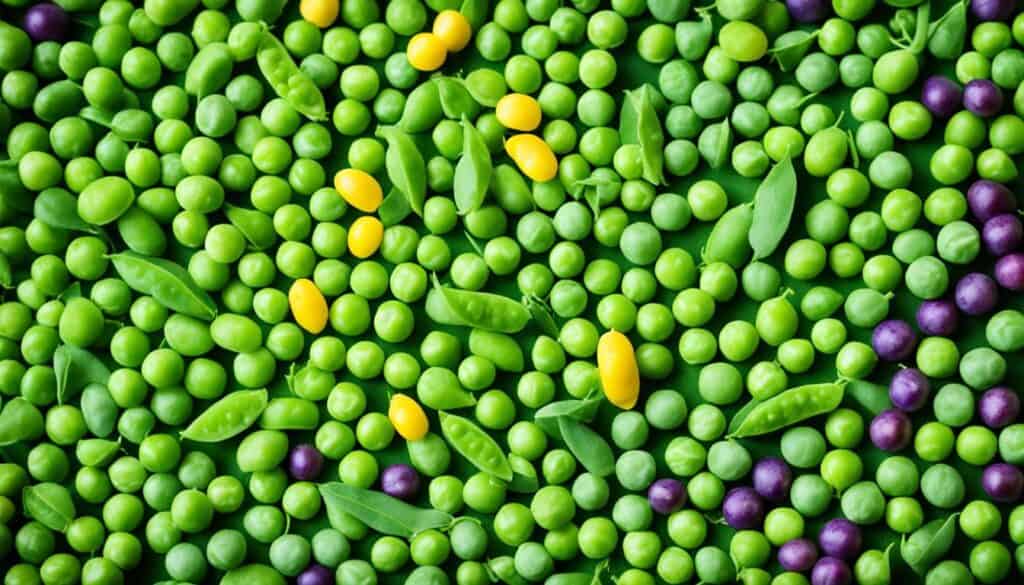
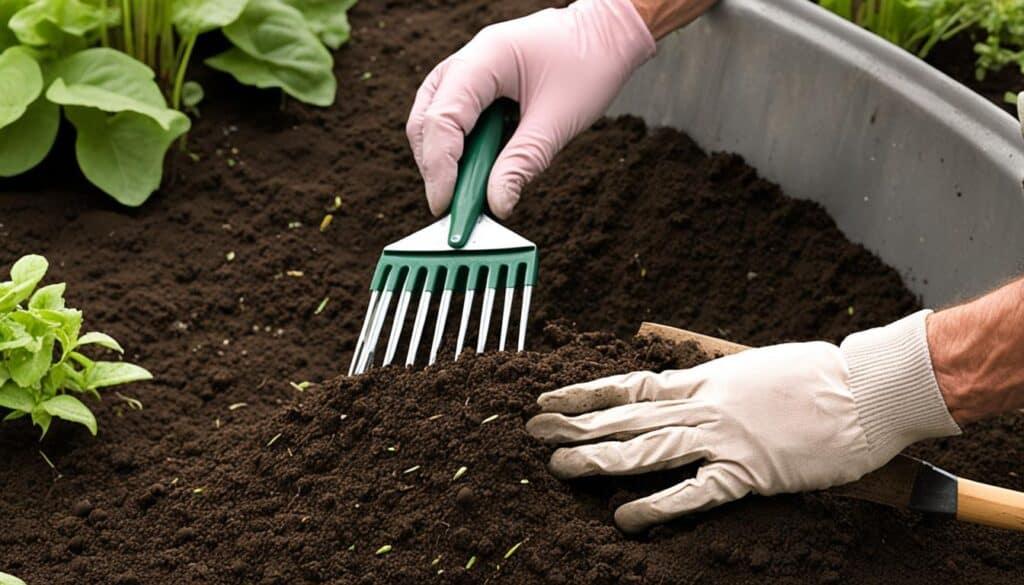
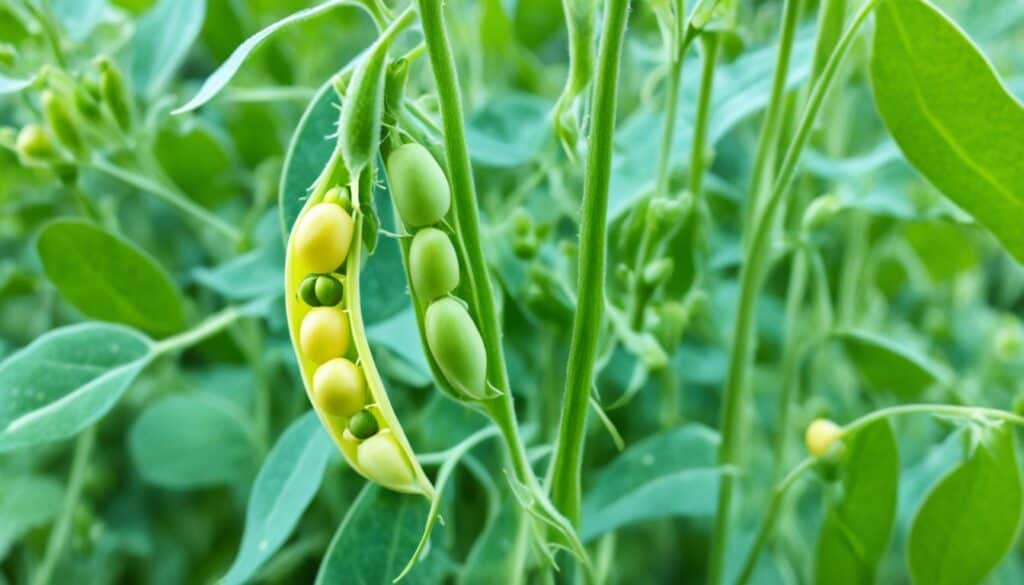



Leave a Reply